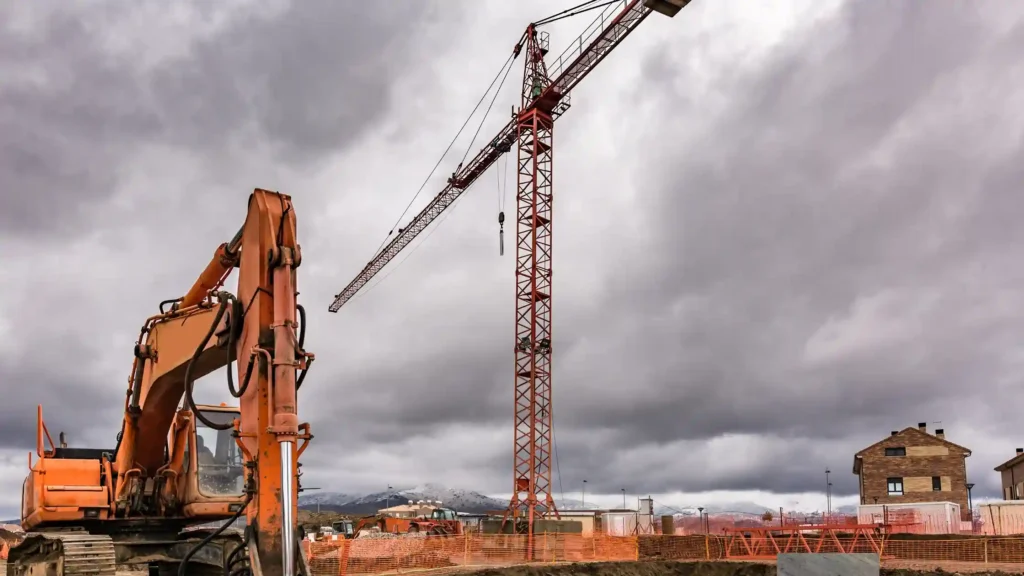
Types of Construction Equipment: Key Machinery for Each Project
When it comes to construction projects, whether building a towering skyscraper or a cozy residential home, the tools and machinery used make all the difference. Construction equipment isn’t just about speeding up the process—it ensures precision, safety, and the ability to tackle tasks that would otherwise be impossible.
From heavy-duty machines for large-scale infrastructure to compact equipment for smaller projects, having the right construction machinery is critical. In this blog, we’ll dive into the top 9 types of construction equipment, their uses, pros, and cons, so you can confidently select the tools you need for success.
Learn more at HD Hyundaice.
Role of Construction Equipment
Construction equipment is quite fundamentally used in the execution of lifting, digging, grading, and moving materials and much more. The machines involved in construction vary in size from the large bulldozers to the small precise machinery tools. With the help of breaking the tasks into several steps, along with the utilization of specialized machines, construction projects can be done much more smoothly. Visit The Constructor for more info.
Types of Construction Equipment List
The list of construction equipment is long. Every machine has a specific function, and the machinery selected is dependent on the nature and scope of the project. Let’s proceed with the different types of construction equipment that are normally used in a construction site.
1. Excavators
Excavators are the heavy construction equipment that is used to dig trenches, holes, and foundations. The sizes vary, from small models for residential projects to large models for mining or road construction. The equipment is mounted with a bucket, arm, rotating cab, and movable tracks.
Uses:
- Digging foundations
- Demolition
- Heavy lifting
- Landscaping
Pros:
- Highly versatile
- Can work in confined spaces (compact models)
- Can both dig and lift
Cons:
- Needs skilled operators
- Expensive to rent or buy
Learn more about escavators at Wikipedia.
2. Bulldozers
Bulldozers are one of the most easily identifiable heavy construction equipment. They are used to push large quantities of earth, gravel, or debris in construction and earthmoving tasks. A bulldozer’s large, powerful blade makes it ideal for rough terrains.
Uses:
- Pushing earth and debris
- Leveling surfaces
- Road construction
Pros:
- High power for moving large amounts of material
- Great for rough terrains
Cons:
- Not suitable for precise tasks
- Requires a large area for operation
For more info about Bulldozers, visit Britannica.com.
3. Cranes
Crane plays a crucial role in building construction equipment, particularly for high-rise buildings. This is used for lifting heavy materials such as steel beams, concrete blocks, and other similar stuff to higher floors.
Uses:
- Lifts heavy materials
- Constructing high-rise buildings
- Movement of materials to unreachable places
Pros:
- Raises heavy material up to high elevations
- There are different types and models in the market.
Cons:
- Consumes much space
- Costly for buying or for hiring
Learn more about cranes at DOZR.
4. Backhoe Loaders
A backhoe loader is a tractor, loader, and backhoe in one machine. It is the most versatile of all the machines used in construction. It is capable of performing small and medium-sized jobs using its front bucket to lift materials and backhoe to dig.
Uses:
- Digging and lifting materials
- Small to medium-scale excavation
- Trenching and landscaping
Pros:
- Versatile
- Can easily transport to other job sites
- Good for different applications
Cons:
- Less efficient for large jobs compared to dedicated equipment
Learn about backhoe loaders at Tata Hitachi.
5. Wheel Loaders
Wheel loaders, or front-end loaders, are utilized to scoop and transport large quantities of material, including gravel, sand, and dirt. They are crucial in heavy construction equipment when material handling takes place on a big site.
Uses:
- Material handling
- Truck loading and unloading
- Digging
Pros:
- Ideal for transferring large amounts of material in the shortest time
- Perfect for operating in tight spaces
Cons:
- Poor digging deep trenches
Visit cat.com for more info about wheel loaders.
6. Dump Trucks
Dump trucks are used in moving loose materials, such as sand, gravel, or demolition debris, from one location to another. This equipment is also one of the crucial ones found on the list of civil equipment; it ensures massive quantities of material move across the construction site.
Uses:
- Carrying materials into and out of the site
- Moving debris
Pros:
- They can easily load and unload material
- They can haul large volumes of material
Cons:
- Dump trucks can only move loose materials
- The equipment has to be serviced appropriately for prolonged usage
Visit digit to learn about the best dumper trucks in India.
7. Compactors
Compactors compact soil, asphalt, or concrete, hence a major equipment in building construction. Compaction of the surface will ensure the foundation or road surface is stable and secure.
Uses:
- Soil compaction
- Road construction
- Asphalt compaction
Pros:
- It ensures the stabilization of surfaces
- The foundation and road durability is increased
Cons:
- Compaction requires careful handling to prevent uneven compaction
- It may be noisy and disrupt the process
8. Concrete Mixers
Concrete mixers are one of the most required machineries for mixing and transporting concrete in a construction site. It ensures that the concrete produced has been mixed well or appropriately before it is utilised for foundations, floors, or roads.
Uses:
- Mixing concrete
- Transporting mixed concrete to different locations
Pros:
- Guarantees quality concrete mix
- It can be used in smaller and larger-scale projects
Cons:
- Has to be maintained frequently for smooth running
9. Small Construction Equipment
Other smaller, more straightforward machines also have a place on the construction site. Smaller construction equipment includes drill tools, jackhammers, and concrete saws. These pieces of equipment will be needed to drill holes, cut materials, and perform some small demolition.
Uses:
- Drilling and cutting
- Demolition work
- Surface preparation for other equipment
Pros:
- Smaller and thus cheaper than heavy machinery
- Transportation and operating is much easier
Cons:
- Does not have enough power to perform some jobs
- Has to be operated using manual labor.
Right Machinery for the Task
When one decides to opt for construction machines, the task scope, type, and scale should be properly analyzed. Highway construction or a skyscraper needs heavy construction machines such as a crane, bulldozer, or excavator. However, when the size of the job is small-scale or for simple residential or re-development purposes, one might only need a smaller equipment, like backhoe loaders or a concrete mixer.
Frequently Asked Questions about Construction Equipment Types
Different Types of Construction Equipment are?
Construction equipment can be of various types, which may include excavators, bulldozers, cranes, backhoe loaders, dump trucks, wheel loaders, compactors, and concrete mixers. Every machine has been developed to serve specific functions such as digging, lifting, material handling, and compacting.
Which one is the most used heavy construction equipment?
Most common heavy construction equipment include excavators, bulldozers, cranes, and dump trucks. Such machines are indispensable in large construction projects because of their power and versatility.
Small construction equipment?
Small construction equipment is used in various small construction sites. Small construction equipment is used for more specific tasks like drilling, cutting, and minor excavation. Examples include drills, concrete saws, and jackhammers. These tools are ideal for smaller projects or when only limited space is available.
Conclusion:

It is obvious how diverse the range of construction equipment is. Whether you are using the heaviest machinery available, such as excavators and bulldozers, or the smaller tools like drills and concrete mixers, every one of these will play an important part in making things more efficient and actually moving forward on a project. A construction equipment list with information about each of these functions will help the user choose the right machinery for his needs. From large-scale infrastructure to residential projects, the right construction machinery is critical for delivering high-quality results.



